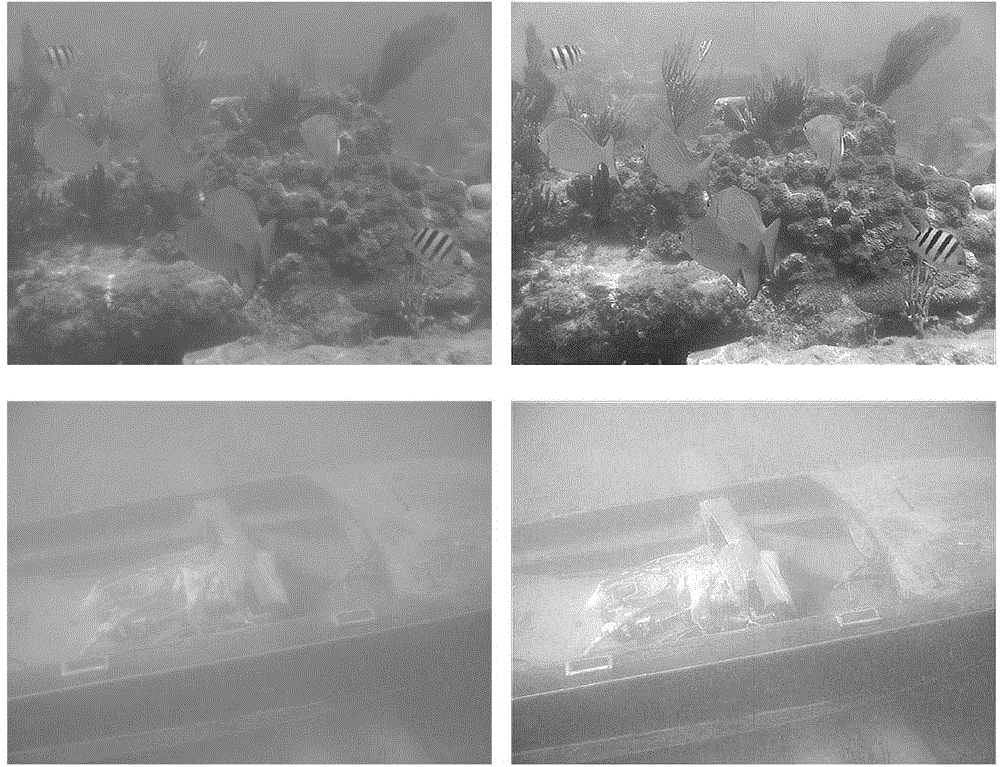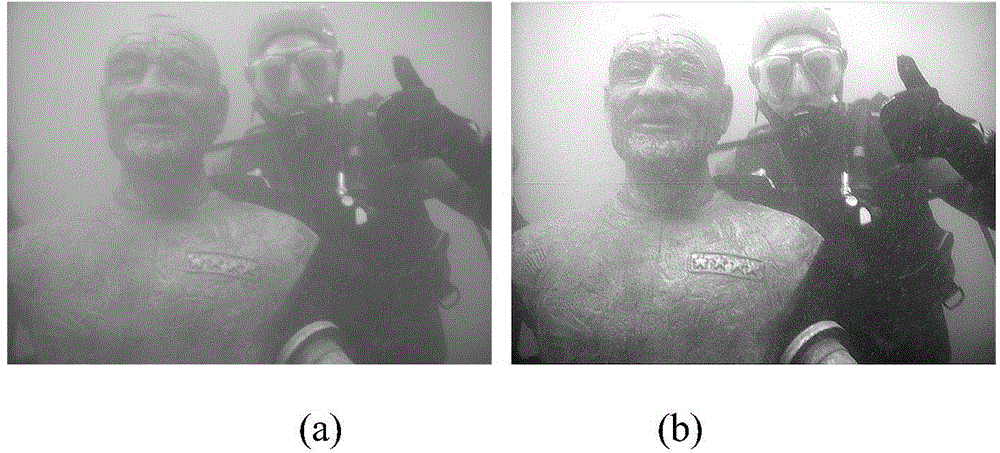Underwater image restoration method based on turbulence model
An underwater image and turbulence model technology, applied in the field of image restoration, can solve the problems of limiting the real-time performance of video observation and time-consuming estimation of scattered light
- Summary
- Abstract
- Description
- Claims
- Application Information
AI Technical Summary
Problems solved by technology
Method used
Image
Examples
Embodiment Construction
[0034]The invention firstly converts the input water quality color image from RGB color space to YCbCr space to realize the separation of luminance component and chrominance component; for the luminance component, bilateral filtering is used to divide the image into low-frequency general components and high-frequency detail components. Combined with the turbulent flow model, the L-R algorithm is used to restore the luminance profile components; for the chrominance components, a new method is used to achieve color correction. Finally, the processed low-frequency components are combined with high-frequency components, and recombined with the color-corrected chrominance components, and converted to RGB space for easy display and storage. figure 1 A block diagram of the proposed method is given.
[0035] 1 Color space transformation
[0036] First, the input color underwater image is converted from RGB space to YCbCr color space. The detailed transformation formula can refer to...
PUM
 Login to View More
Login to View More Abstract
Description
Claims
Application Information
 Login to View More
Login to View More - R&D
- Intellectual Property
- Life Sciences
- Materials
- Tech Scout
- Unparalleled Data Quality
- Higher Quality Content
- 60% Fewer Hallucinations
Browse by: Latest US Patents, China's latest patents, Technical Efficacy Thesaurus, Application Domain, Technology Topic, Popular Technical Reports.
© 2025 PatSnap. All rights reserved.Legal|Privacy policy|Modern Slavery Act Transparency Statement|Sitemap|About US| Contact US: help@patsnap.com



